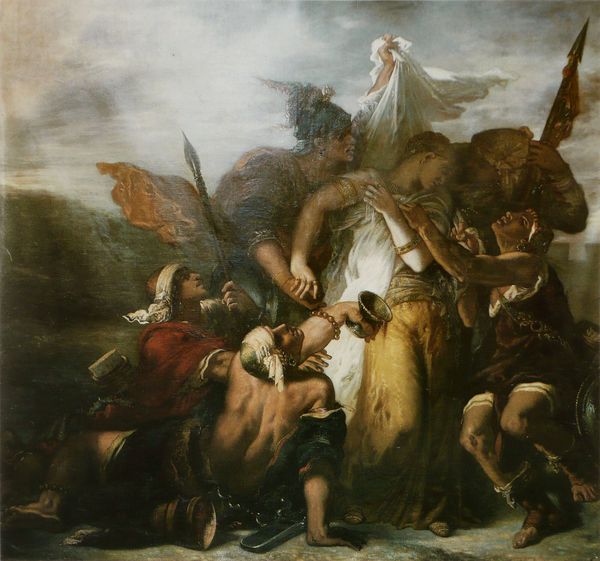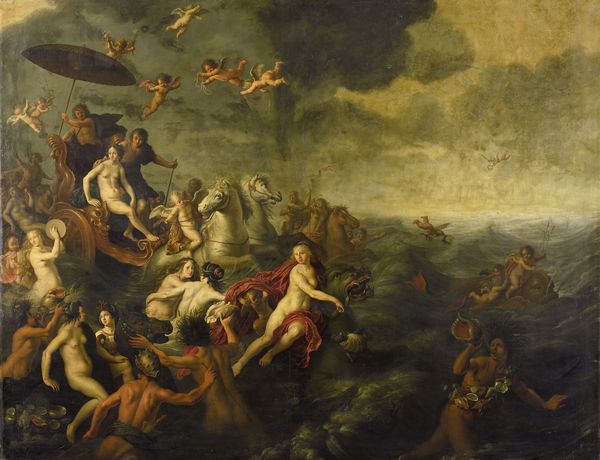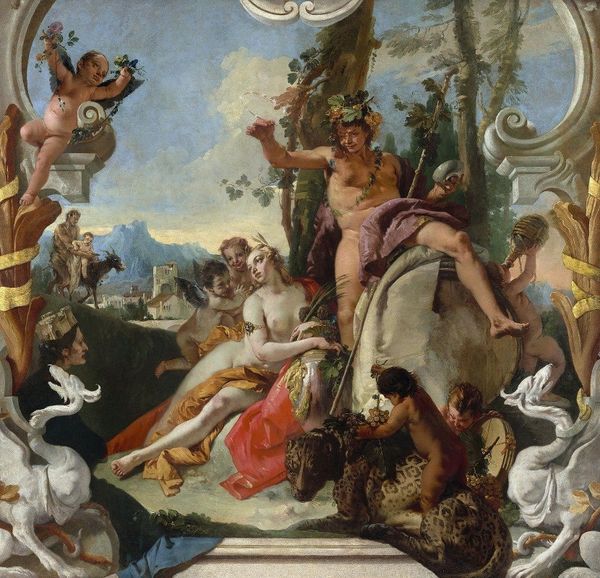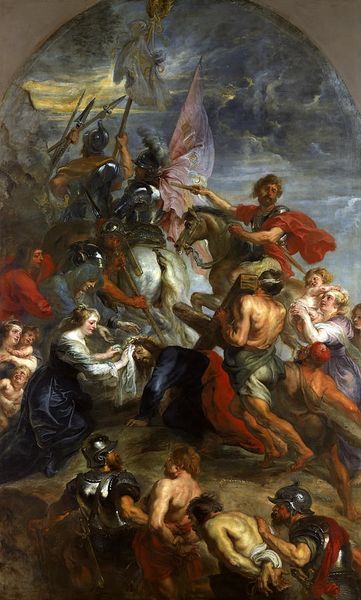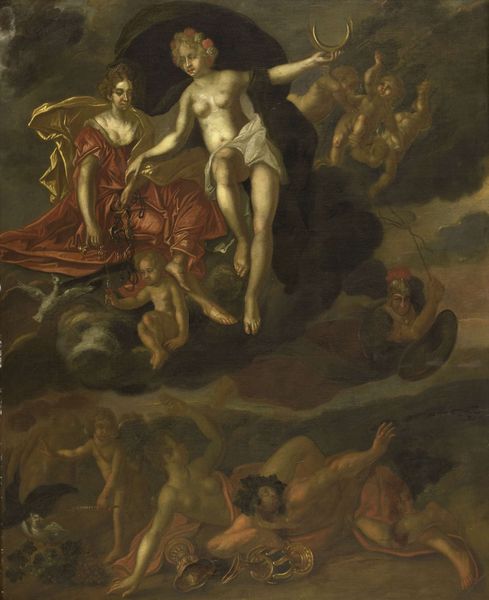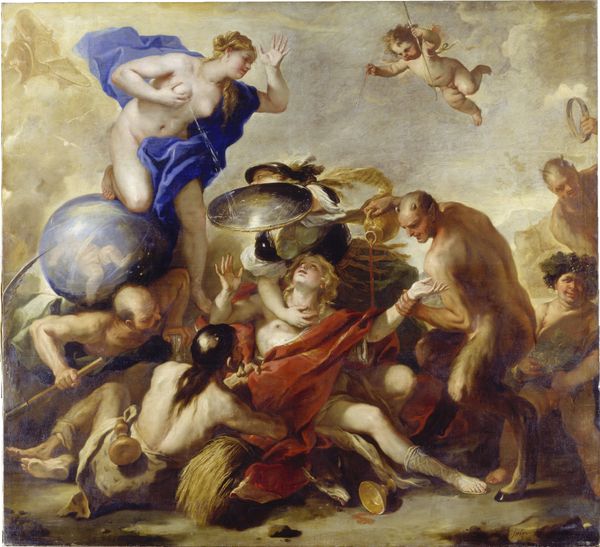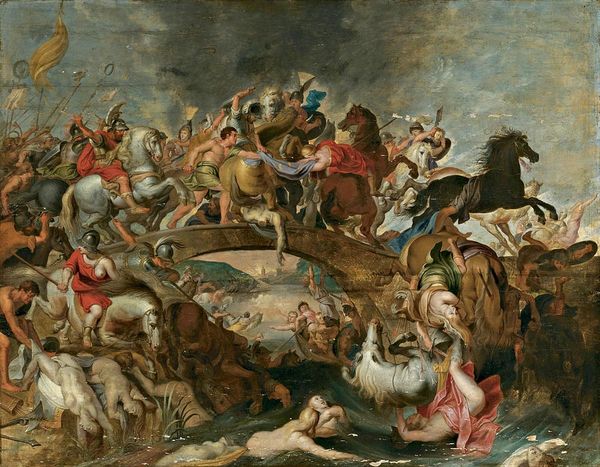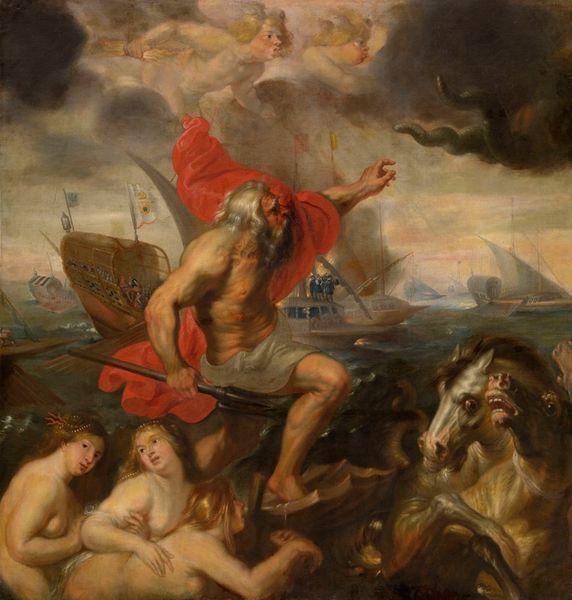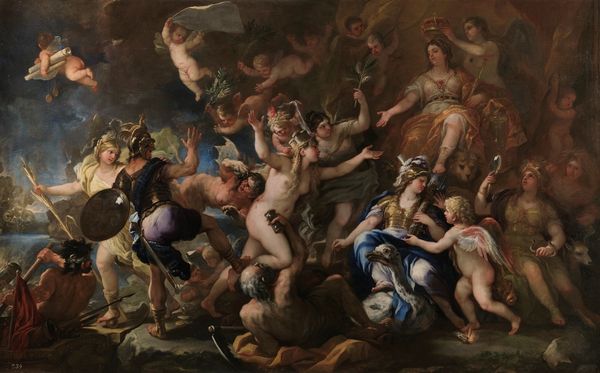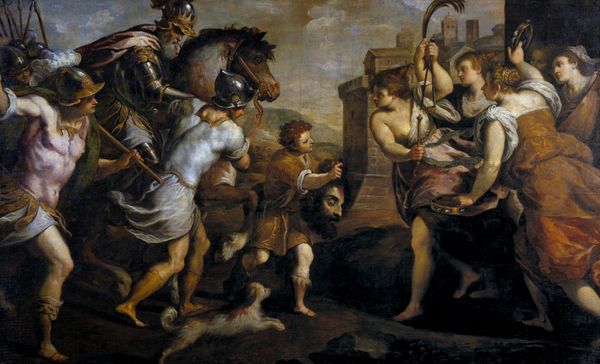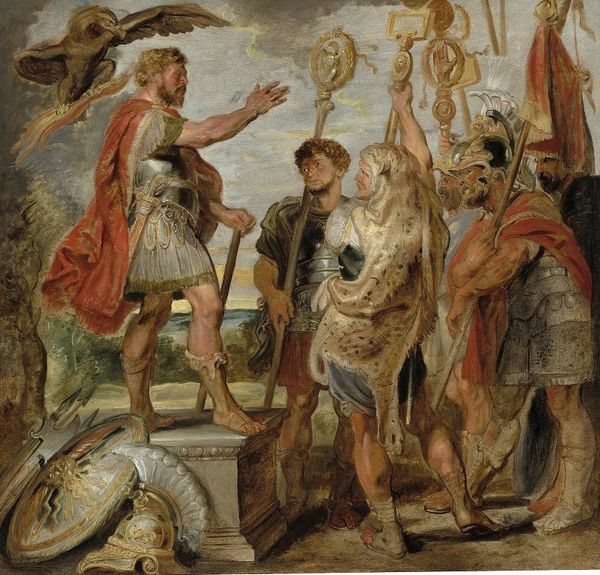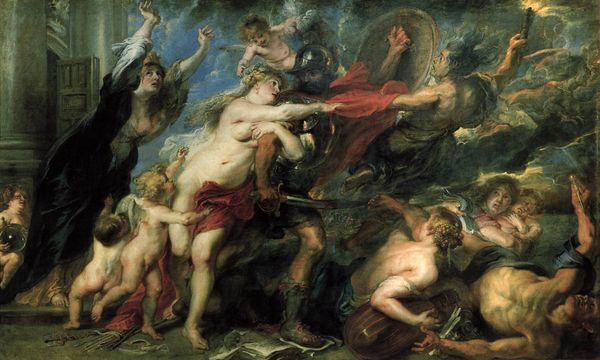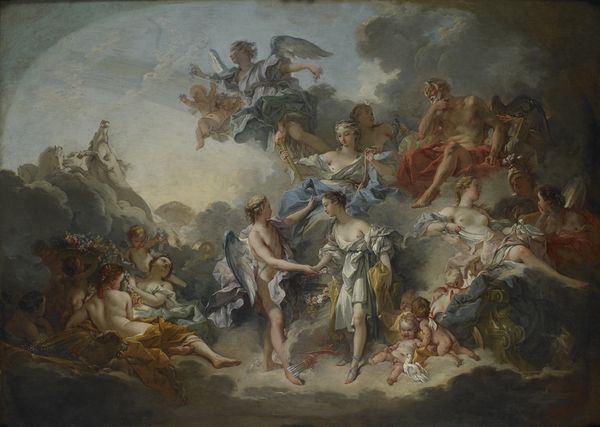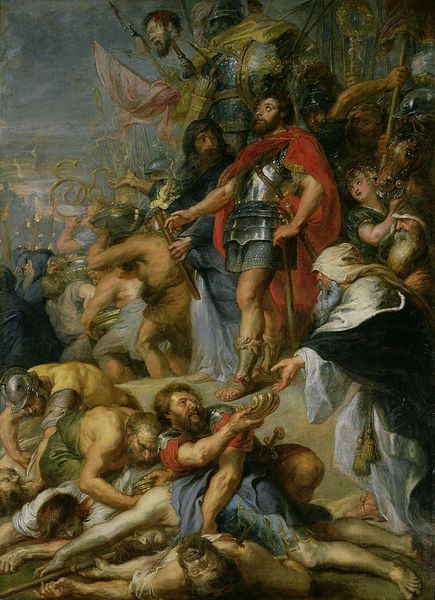
oil-paint
#
oil-paint
#
mannerism
#
figuration
#
oil painting
#
mythology
#
history-painting
Copyright: Public domain
Curator: "The Amazement of the Gods" by Hans von Aachen, created around 1590 using oil paint... it's quite the spectacle, isn't it? All these figures intertwined. I'm struck by the opulence of the scene; the lavish use of oil must have been very expensive at the time, but how do you interpret this work, thinking about its construction and materials? Editor: That's a really good question. Seeing this from a production standpoint, I’m wondering about the choice of oil specifically. Was it just about achieving that characteristic Mannerist smoothness, or something more? Curator: Exactly! Think about where the pigments came from, who prepared the paints, who commissioned the work, and for what purpose. Oil paints, in particular, allowed for complex layering, and a luminous glaze. Those weren't merely aesthetic choices, but statements about wealth and status. Someone was paying for a costly application. Editor: So, the very materiality of the artwork is telling us something about power structures in society? It also gives more dimension to the figures, which must have had a deep connection to how people viewed paintings from this period. Curator: Absolutely. The canvas itself, the grinding of the pigments, the skilled labor involved in its creation—each element speaks to the economic and social realities of the time. The sensuous quality of the finished surface also caters to a patron with particular tastes. Are we celebrating skill or flaunting privilege? Editor: Wow, I never really thought about it that way before. I always focused on the story being told through the figures, but it's really insightful to think about what it took to even *make* that story visible. Curator: Precisely. And who had the authority to tell that story through such expensive and specialized means?
Comments
No comments
Be the first to comment and join the conversation on the ultimate creative platform.
